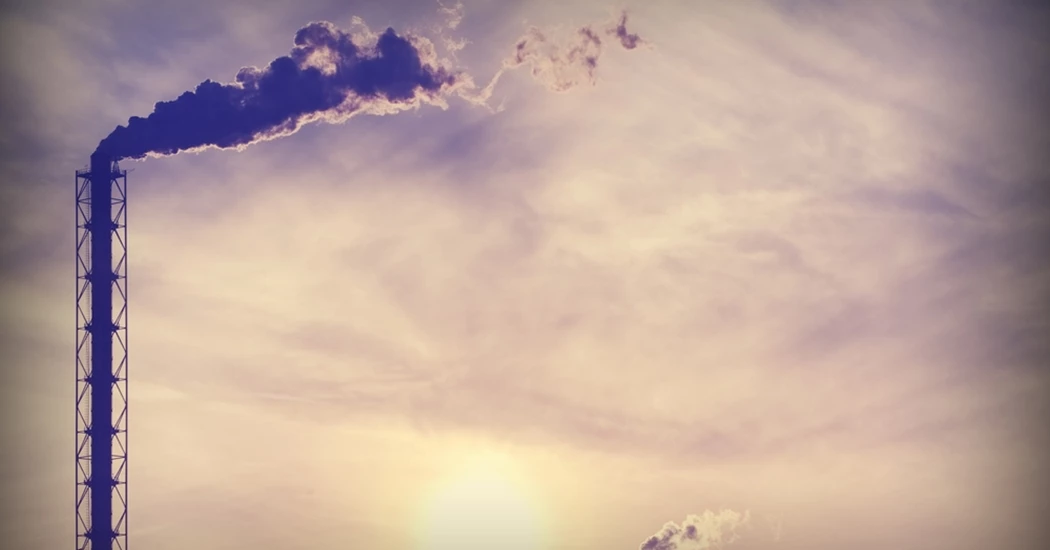The critical role of carbon capture in delivering our climate objectives
The latest findings unveiled in DNV's Energy Transition Outlook (ETO) chart a troubling path — a trajectory leading us toward a concerning 2.2°C of global warming. With 2023 and 2024 set to mark record yearly greenhouse gas emissions, speeding the roll-out of carbon capture, utilisation and storage (CCUS) has never been more important.
DNV’s ETO research examines our future energy systems, including the role hydrocarbons will play in them. Today fossil fuels provide around 80% of primary energy supply globally (DNV Energy Transition Outlook 2023). Whilst their contribution is projected to change dramatically, DNV forecasts that mid-century they will still supply 48% of primary energy, with natural gas forecast to be the largest energy source. Increased efficiency and renewable integration will of course be essential, but against this background the importance of CCUS, a decarbonisation technology that can be retrofitted to existing emission sources, comes into sharp focus.
Achieving net zero and keeping global warming below the Paris Agreement’s 1.5°C target now seems nearly impossible without the rapid deployment of CCUS technologies. CCUS can both prevent CO2 emissions from power, industry, and hydrogen production from reaching the atmosphere, but also enable Carbon Dioxide Removal (CDR) at scale. The associated infrastructure provides the means to store CO2 removed using technologies such as Direct Air Capture and Bio-energy CCS.
To enable wider adoption of CCUS requires a bold and substantial push, moving beyond first-of-a kind projects to the deployment levels needed to enable cost reductions and mirror the learning rates of other established low-carbon technologies. Policy and regulatory challenges are now the main hurdles for such levels of implementation; the technology itself is well proven. Amine based CO2 capture, today’s state of the art post combustion capture technique, is well understood and available commercially. Today more than 5000 miles of CO2 pipelines are in operation in North America and CO2 has been stored in the subsurface there for over 50 years.
Progress is being made. According to the Global CCS Institute’s 2023 Global Status of CCS Report, the CCS project pipeline has grown more than 50% annually for the last 3 years (Global CCS Institute - Global Status of CCS 2023); reflective of supportive policy and regulatory frameworks. Despite this growth, following the current trajectory CCUS technologies will capture approximately 6% of remaining emissions in 20501, illustrating the disparity between deployment and what is needed for net zero. Most net zero scenarios require CCUS to scale up from today’s operational capacity of 49 megatonnes per annum (Mtpa) over 100 times by 2050; a significant challenge and opportunity for the emerging industry.
In the Middle East and North Africa (MENA) economies are today heavily reliant on fossil fuels, which provide 97% of primary energy supply. Primary energy supply is expected to grow by a third, with fossil fuels contributing 69% in 20501. Recently introduced ambitious national climate commitments from countries like the UAE, Saudi Arabia, and Oman reflect regional ambition to decarbonise. DNV’s ETO analysis also highlights that the Middle East will increasingly dominate oil and gas production and export. CCUS is expected to play an important role, both supporting national climate commitments and contributing to growth by enabling production of low-carbon hydrogen for export.
CCUS technology has already gained a notable foothold in the region, constituting 8% of global operational capture capacity2. Presently, MENA houses three operational CCS projects. Three more are under construction, and three are in advanced stages of development. Additionally, six CCS facilities in this region are linked to the natural gas processing industry. Projects in development, construction and operation in Qatar, Saudi Arabia, the UAE, and Oman have a combined capacity of 19.5 Mtpa2. Key initiatives include Qatar Gas's plan to increase its capture rate to 5 Mtpa by 2025, driven by the world's largest liquefied natural gas project, the North Field expansion. Saudi Aramco’s efforts include the ambitious Al Jubail CCUS industrial hub which aims to capture and store 9 Mtpa from natural gas processing and other industrial sources by 2027. In the UAE, ADNOC's phased CCS projects aim to capture around 5 Mtpa of CO2 by 2030 from sources including the Shah sour gas plant. These efforts are met with strong support from regional governments, like that of Saudi Arabia which has outlined an interim sequestration target of 44 Mtpa by 2035.
This upwards trend is driven not only by the heightened recognition of the need to combat climate change, but also by a focus on the opportunity presented by energy transition. By utilizing CCUS to reduce CO2 emissions from hydrogen production, the region can swiftly deliver commercial quantities of low-carbon hydrogen, fostering both economic growth and sustainability. Commitments from the UAE and Saudi Arabia, coupled with the region's abundant resources, position it to lead in low-carbon hydrogen production for export markets.
With COP27 held in Egypt and COP28 to take place in the UAE imminently, MENA has become a center for discussions on decarbonisation. Nationally Determined Contributions (NDCs) from countries in the region are increasingly recognising the importance of CCUS in their emission reduction plans. With regional energy demand still rising, the need for accelerated deployment is particularly prevalent in MENA: it is fundamental for ongoing economic growth and alignment with global climate goals. With this convergence of interests it is hoped that regional stakeholders will trigger further, collaborative actions to take advantage of favorable conditions and significantly escalate CCUS deployment. By doing so the Middle East will play a central role in global decarbonisation efforts, contributing significantly to safeguarding a sustainable future for generations to come.
Energy Connects includes information by a variety of sources, such as contributing experts, external journalists and comments from attendees of our events, which may contain personal opinion of others. All opinions expressed are solely the views of the author(s) and do not necessarily reflect the opinions of Energy Connects, dmg events, its parent company DMGT or any affiliates of the same.
KEEPING THE ENERGY INDUSTRY CONNECTED
Subscribe to our newsletter and get the best of Energy Connects directly to your inbox each week.
By subscribing, you agree to the processing of your personal data by dmg events as described in the Privacy Policy.
















